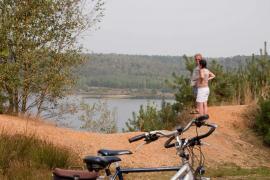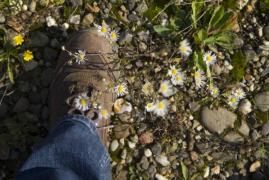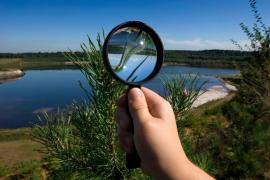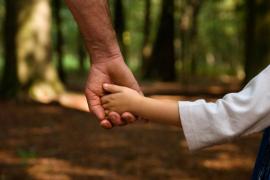On the occasion of the 10th anniversary of the National Park in 2016, the Flemish Government challenged the region to make this National Park 2x as big, 2x as beautiful and 2x as strong.
In consultation with more than 30 partners, work was done on a master plan that described the mission, vision and ambitions for the Hoge Kempen for the next 20 years. This Masterplan 20-40 was handed over to Flemish Minister of Justice and Enforcement, Environment, Energy and Tourism Zuhal Demir on 31 January 2020, during the installation meeting of the Hoge Kempen National Park Steering Committee. The Master Plan contains the future vision for the nature and biodiversity of the National Park, but also addresses challenges such as connecting new subareas and defragmentation.
Based on 5 ambitions, the challenges and opportunities for the National Park for the next 20 years were described. The Master Plan sets the stage for a robust, recruiting and resilient National Park that is 2x as big, 2x as beautiful and 2x as strong.
2x as big
The first milestone is already there: the Hoge Kempen National Park expands from 60 to 120 km², with a mosaic of woods, heathland, fens, sand dunes, mining rills and gravel ponds. It now connects ten municipalities: As, Bilzen, Bree, Dilsen-Stokkem, Genk, Lanaken, Maaseik, Maasmechelen, Oudsbergen and Zutendaal.
The new subareas of the Hoge Kempen National Park are Duinengordel, Bergerven and Thorpark to the north and the Munster forest on the border with Haspengouw to the south.
The Bosbeek valley, bordering the National Park, will receive extra attention as an "Ecological Impulse Area" and connects the northern subareas.
2x as beautiful
A national park is first and foremost a home for rare animal and plant species. The Agency for Nature and Forests of the Flemish Government, the municipalities involved and the nature associations Limburgs Landschap, Natuurpunt and Orchis are committed to optimising the forest and nature areas of the Hoge Kempen. As managers, they are responsible for 80% of the National Park's area.
The plan does not avoid a number of bottlenecks, formulating, among other things, ambitious targets for open space. Roads crossing the National Park should be safer for both humans and animals, for instance by building ecoducts or ecotunnels. Minister Demir is currently finalising the Flemish action programme on ecological defragmentation, which will include all necessary projects.
2x as strong
In addition, a national park is a strong brand for tourism worldwide. With this asset, the Hoge Kempen National Park will become a pole of attraction for visitors looking for an authentic nature experience. More than 1,000 km of signposted routes for hikers, cyclists, horse riders and mountain bikers will guide these visitors in the right direction. In addition, the 6 already existing gateways to the National Park (Terhills, Kattevennen, Lieteberg, Mechelse Heide, Pietersheim, Station As) continue to play a central role in the tourist development of the region. Moreover, with the expansion of the National Park, 3 new gateways will be added in the coming years: Commandery of Gruitrode, 't Eilandje and Thorpark.
One of the principles of the plan is that a national park can only be a strong brand together with its residents, visitors, managers and entrepreneurs. More than 30 partners are forming a coalition for this plan and joining forces. This will lead to concrete realisations and a Hoge Kempen National Park that will not only be twice as big, but also twice as beautiful and above all twice as strong.




